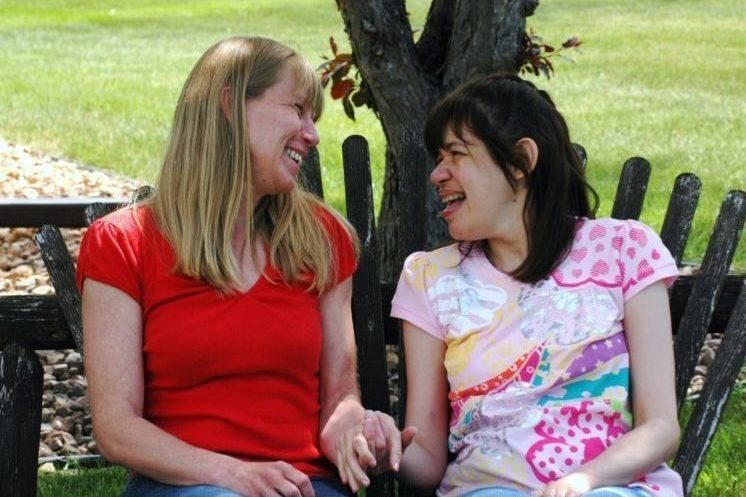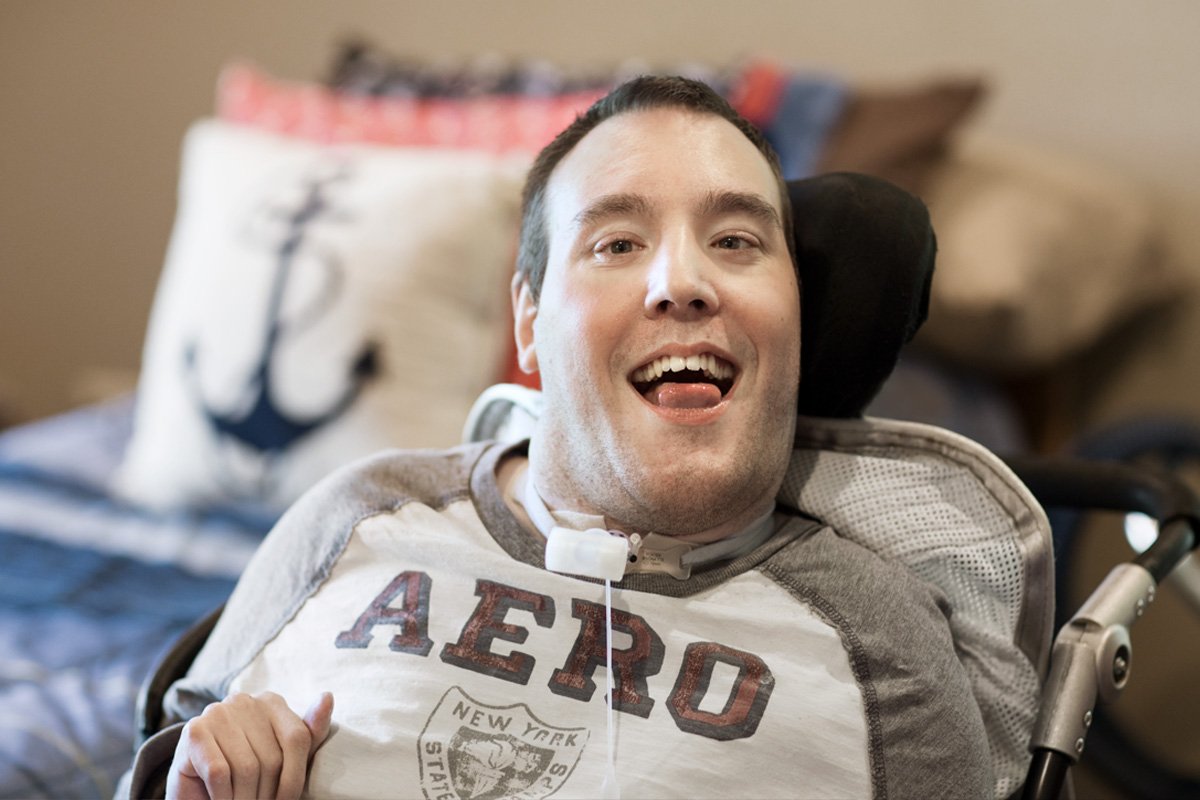CEO Corner – April, 2025
April 15, 2025

Upholding Core Social Work Values in the Pendulum Downswing
As I closed out last month’s recognition of Social Work Month just the other week, I took a moment to reflect on a year leading with our organization that serves individuals with a variety of abilities. With the prospect of funding reductions coming back on the horizon, it feels as though we have just started to gain some traction—maybe even beginning to live up to the promise of how disability services should be funded in our modern world.
Fresh off a visit to my lawmaker’s office, advocating for continued investment in disability services, I took another sip of coffee and asked myself: How does the profession of social work and the helping professions generally persevere despite the shifting tides of fiscal policy? What about our work with people with disabilities persists, regardless of where the pendulum swings?
In social work, funding increases and reductions are as inevitable as the changing seasons or the back-and-forth pattern of the clock’s pendulum. But what endures through it all are the foundational values of our practice—values like client autonomy, dignity, and worth. These principles guide how we engage with individuals, especially those with disabilities, and shape the core of our work. They aren’t just abstract concepts; they are the very framework of our practice. Even in times of financial instability, these values remain constant, empowering us to prioritize the well-being of those we serve.
What’s striking is that, despite the fluctuations in funding and the challenges that come with them, these values continue to guide our practice in social work and more broadly the helping professions and inform every decision we make. In the disability services field, practices like Self-Direction and Active Support reflect these values, ensuring individuals are empowered to make decisions and live with dignity, regardless of whatever the external pressures or budget constraints may be. Even when funding reductions loom large, these guiding principles help us persevere, reminding us that, much like our clients facing their own adversity, we too can continue to move forward, grounded in what truly matters.
The Historical Context of Self-Direction
The philosophy of Self-Direction has deep historical roots, particularly emerging in the United States after World War II, where individuals with disabilities, particularly veterans, required more control over their care and rehabilitation. The idea of Self-Direction as a practice for people with disabilities was significantly influenced by early efforts to assist veterans, recognizing the need for individuals to take charge of their own lives post-injury. The original funding for the development of Self-Direction came from the Robert Wood Johnson Foundation in the late 20th century. Their efforts helped establish models for people with disabilities to have more control over their own care decisions, shaping policies that continue to influence Self-Direction today.
In the recent Winter 2024-25 issue of IMPACT, a newsletter by the Institute on Community Integration at University of Minnesota, Self-Direction was framed as a means of empowerment and independence, especially by policy changes such as Medicaid waivers which continue to play an outsized role in how disability services are organized, funded and improved. Waivers have proven to provide individuals with disabilities more control over their care and support systems (IMPACT, 2024). This shift aligned with the values of autonomy and self-determination, as individuals could choose their service providers and manage their own services, reflecting their needs and aspirations.
Active Support: Empowering Engagement and Participation
Active Support emerged in the 1980s as a response to the need for greater participation and inclusion for individuals with intellectual and developmental disabilities. The core of Active Support is the belief that individuals with disabilities should not be passive recipients of care but active participants in all aspects of their lives. As discussed in IMPACT, this approach is instrumental in fostering participation in both routine activities and community life, promoting a sense of belonging and purpose (IMPACT, 2024).
In practice, Active Support enables individuals to take part in everyday activities—whether it’s preparing a meal, managing personal hygiene, or participating in social events. The role of the service provider is to facilitate and encourage engagement, offering support in a way that respects the person’s autonomy, promotes dignity, and affirms their worth. Active Support encourages independence and self-efficacy by ensuring individuals can make choices, take on new tasks, and experience success on their terms.
Through Active Support, service providers do not perform tasks for individuals but instead create opportunities for individuals to perform tasks themselves, offering assistance only when necessary. This approach aligns with social work values by promoting dignity—the belief that individuals should be treated as capable agents of their own lives.
Practical Examples of Active Support and Self-Direction Upholding Social Work Values
The practical applications of Active Support and Self-Direction can be seen in various aspects of daily life. These approaches empower individuals with disabilities to make decisions that affect their autonomy, dignity, and worth:
In Choosing Daily Activities:
Self-Direction looks like: A person with a disability decides how they spend their day—whether engaging in work, hobbies, or social interactions. They are provided with the resources to make these decisions and the autonomy to choose what activities best align with their values and interests.
Active Support looks like: Service providers help the individual engage in their chosen activities by offering encouragement, guidance, or assistance with tasks. This ensures that the individual remains engaged and connected with the community, reinforcing their sense of dignity and purpose.
In Managing Personal Care:
Self-Direction looks like: Individuals choose who provides their personal care services and how those services are delivered. Whether it’s hiring personal assistants or selecting caregivers, individuals have control over the choices that affect their lives.
Active Support looks like: The role of support staff is to encourage participation in personal care tasks, whether it’s bathing, dressing, or grooming. The staff facilitates the process without taking over, ensuring that the individual maintains their dignity by participating as much as possible in self-care routines.
In Making Medical Decisions:
Self-Direction looks like: In a self-directed care model, individuals are involved in decisions about their medical care, including choosing doctors, therapies, and treatments. They are empowered to make informed decisions based on their personal preferences and needs.
Active Support looks like: Support staff assist individuals in understanding their medical options and advocating for their preferences in medical settings. This can include helping the individual communicate their concerns, preferences, and questions to healthcare providers, ensuring that they retain control over their healthcare.
In Participation in the Community:
Self-Direction looks like: A person may choose to live independently or with a caregiver, select social activities, and engage in work or volunteer opportunities that suit their abilities and desires. Self-direction allows individuals to pursue these activities as they see fit.
Active Support looks like: Providers support individuals to actively engage in community events, whether it’s attending a local gathering, taking part in a volunteer project, or going out with friends. By facilitating participation in the community, individuals develop a sense of belonging and autonomy.
These examples illustrate how Self-Direction and Active Support work together to empower individuals with disabilities, fostering an environment where autonomy, dignity, and worth are respected and promoted in daily practice.
The Interplay of Active Support and Self-Direction in Promoting Social Work Values
Although Active Support and Self-Direction are distinct approaches, they both serve to uphold client autonomy, dignity, and worth in the following ways:
Supporting Choice and Control:
Self-Direction offers individuals the freedom to make choices regarding their care, from selecting service providers to determining the types of services they receive. This is an expression of autonomy, as individuals have the power to shape the support they receive based on their personal preferences and needs.
Active Support complements this by ensuring that, once those choices are made, individuals are actively engaged in their own care and daily activities. For example, if a person with a disability chooses a specific medical treatment or routine, Active Support ensures they are involved in every step of the process, offering support and encouragement as needed.
Empowerment through Participation:
Both practices empower individuals by ensuring they are active participants in their own lives. In Self-Direction, individuals manage their care, choose their caregivers, and control the resources that enable them to live independently. In Active Support, the individual is actively involved in daily routines and decisions, from choosing what to eat to engaging in social activities. This active participation affirms their worth and promotes their dignity, as it is a clear recognition that they are capable of engaging meaningfully with the world around them.
Person-Centered Care:
Both Active Support and Self-Direction are grounded in the principles of person-centered care, a hallmark of social work practice. Person-centered care recognizes the individual as the expert in their own life, emphasizing that their choices, preferences, and goals should drive the care and services they receive. Service providers act as facilitators, ensuring that these choices are respected and supported in a way that promotes autonomy and maintains dignity (Trevithick, 2012).
In a Headwind or No Wind: Client Autonomy, Dignity, and Worth Holds Steadfast
Despite the prospect of looming reductions in funding always at our doorstep and the unpredictable nature of fiscal policies, the commitment to upholding autonomy, dignity, and worth in our practice remains unwavering. The core values of social work—empowering choice and dignity—continue to guide our work with individuals with disabilities, and we have seen firsthand how commitment to these values can sustain us even amid financial uncertainty. Social workers and the helping professions can be scrappy, undeterred by adversity and focused. Practices like Active Support and Self-Direction provide social workers and others in the helping professions working with individuals with disabilities the underlying frameworks needed to ensure that individuals are supported in their autonomy, dignity, and worth, regardless of external pressures and ecological factors.
As we navigate the challenges posed by any current or future funding reductions, the work of social workers and the helping professions in the disability services field will continue to be guided by these fundamental principles. These values are not just ideals but practical frameworks that support individuals with disabilities in leading independent, self-directed lives. Through perseverance, we continue to advocate for the necessary resources, but regardless of the fiscal climate, the dignity and worth of those we serve will always be at the heart of our work.
Written by Rob Edwards, President and CEO
References
Trevithick, P. (2012). Social work skills and knowledge: A practice handbook (3rd ed.). London: Open University Press.
National Association of Social Workers (NASW). (2017). NASW Code of Ethics. Retrieved from https://www.socialworkers.org/ethics
Caldwell, J., & Hutchison, S. (2001). Active Support: A framework for promoting participation in the lives of people with learning disabilities. Journal of Intellectual Disabilities, 5(2), 95-105.
O’Brien, J. (1987). Self-directed services: A framework for creating new possibilities. Center for Self-Determination, University of Maryland.
In. (n.d.). Self-Direction: A History of Independence and Empowerment. Retrieved from https://mycil.org/self-direction
IMPACT (2024). Volume 37, Number 3, Winter 2024-25. Institute on Community Integration, University of Minnesota. Retrieved from https://publications.ici.umn.edu/impact/37-3/cover
News / CEO Updates /


